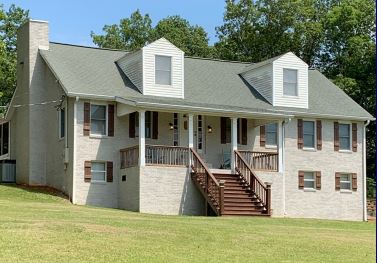Our unfinished basement has hollow cinderblock walls and I am wanting to insulate it and drywall the basement. Our house sits on a slope so the font of the house, including the basement, is ground level, but the backside is underground. What is your recommendation for insulating it? The house is located in North Alabama. I have YouTubed a few different methods of insulating. Option A: 2" rigid foam board, then 1 x 4, and finally sheetrock. Option B: 1/2" and 3/4" rigid foam board, air gap, stud wall with 2 x 4, then roll fiberglass insulation, vapor barrier, and finally sheetrock.
Option A seems like a good option for the back part that is underground to maximize the space but on the front part of the room, I feel I need to utilize option B since it is an exposed hollow wall. Attached is a picture to help describe the situation of the basement. 
